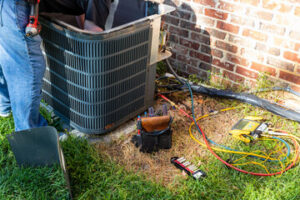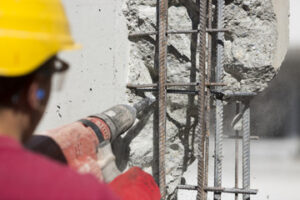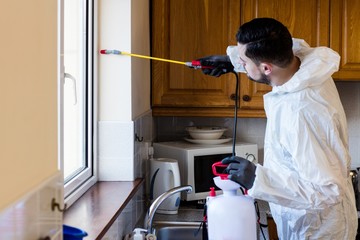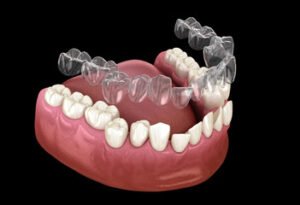Proper AC repairs and maintenance can help to improve energy efficiency, extend the lifespan of your system, and keep you and your family comfortable.

First, verify that your thermostat is on “Cool” and set correctly. You may also need to clean your evaporator coil and air filters. Contact AC Repair Round Rock TX for professional help.
Avoid handling refrigerant or conducting major electrical repair on your own; a professional will have the tools and expertise to perform these tasks safely.
One of the most common AC repair issues occurs due to power surges that damage electrical components. The compressor and circuit board both rely on precise electrical signals to operate efficiently, so any interruption in this process can cause immediate malfunctions or lead to latent problems that surface later in the system’s operation.
When these problems are not addressed promptly, they can worsen over time, leading to additional problems and expensive repairs. Implementing a routine maintenance plan that includes steps like cleaning the condenser coil and replacing the air filter can help protect your air conditioning from surge-related issues while also preventing costly replacement expenses.
The first thing to check when your AC won’t start is if it tripped the circuit breaker. This is a common problem that can be caused by using too many appliances at once or by power surges that cause the breaker to shut off. To reset the breaker, find it in your home’s electrical panel and flip it to the off position. Wait a moment and then switch it back to the on position. If this does not resolve the problem, contact a professional for further inspection.
Another common issue is insufficient voltage, which can also be the result of a surge or other electrical problems in your home. Contactors, which are responsible for regulating the flow of electricity to the compressor and blower motor, can become worn out or damaged over time. This can prevent them from delivering the correct amount of voltage to your air conditioner and could result in overheating or a failure to turn on. An electrician or HVAC technician can perform a thorough inspection to identify the source of this problem and recommend the appropriate solutions.
Water Leaks
When the AC is working properly, it will remove moisture from the air during the cooling process. This moisture is collected in a drain pan, which is located under the AC unit. If this drain line becomes clogged with algae or dirt, it can cause water leaks into your home. You can prevent this problem by regularly checking and cleaning your drain line. If you notice a clog, you can use a wet/dry vacuum or pour diluted vinegar into the drain to dislodge any debris.
An air conditioning expert can help you identify the source of the leak and repair it promptly. If the problem is left untreated, excess moisture can lead to mold growth, which is especially harmful to children, the elderly, and individuals with respiratory conditions. Additionally, mold spores can spread throughout your home, leading to additional health problems.
Water leaking from your AC unit can indicate several issues, but most often stems from a clogged condensate drain line. This is one of the most common AC repair issues and can be caused by a variety of factors, including dirt, algae, or leaves blocking the line. Regularly inspecting and cleaning your air filter, clogged drain line, and evaporator coils can help prevent this issue.
Other possible causes of water leaks include a cracked or damaged drain pan, a broken evaporator coil, or poor installation. If your AC unit is more than 10 years old, it may be time to consider a replacement. This could save you money in the long run, as newer units are more energy-efficient and tend to have fewer repair issues than older models. Additionally, repairing any current leaks can help you get the most out of your existing system.
Unusual Noises
If you’re hearing unusual noises, it may be a sign of serious mechanical or electrical problems. It’s important to know what these sounds can indicate, and when it’s time to call an HVAC technician. Catching these issues early can help you avoid costly repairs or complete system failure.
Clicking sounds are normal when your AC is turning on and off during a cycle, but rapid or ongoing clicking could indicate an electrical problem. This can be dangerous, especially in older units, and needs to be addressed as quickly as possible. Buzzing sounds are also a concern, as they often indicate an issue with the compressor. This problem can lead to a refrigerant leak, which can be harmful to your health and home as well as cause expensive repair bills.
Rattling sounds can indicate a variety of issues, but most commonly they’re a sign that the fan motor or compressor bearings need lubrication. This is an easy fix, but it’s essential to turn the unit off and verify that it’s completely powered off before attempting to lubricate components. You’ll want to use a non-detergent lubricant that’s safe for electric motors.
A hissing sound is typically an indication of low refrigerant, which can reduce your system’s efficiency and potentially damage the unit. A professional can test your refrigerant levels and perform a leak search to locate the source of the leak. Regular maintenance visits can also prevent these problems from developing, by lubricating moving parts and cleaning crucial elements before they wear down.
Dirty Air Filters
Dirty air filters affect the AC system’s ability to properly cool your home or business. They restrict airflow, forcing the system to work overtime, leading to excessive wear and tear. This strain causes the system to experience failure before its typical lifespan. Thankfully, you can avoid this by regularly cleaning or replacing your air filter.
The primary function of air filters is to trap and filter airborne contaminants that can contribute to health problems. These include dust, pet dander, mold spores and chemical cleaning products. If your filter becomes too dirty, these pollutants will be released into the air that you and your family breathe. You can recognize a dirty filter by visual inspection, as the top layer will appear soiled and clogged with dust accumulation. A good test is to hold the filter up to a light; if you can’t see through the filter, it’s time for a replacement.
Air filters require regular maintenance to keep them clean, and there are a few warning signs to watch for. The most common is a noticeable increase in your energy bills, which results from the AC working harder than usual to compensate for restricted airflow. This will also result in uncomfortably warm indoor temperatures.
A soiled air filter can also cause the system to overheat, which could damage the blower motor and/or evaporator coil. In extreme cases, a dirty air filter can even lead to complete system breakdown, requiring costly repairs and/or a full replacement. Ensure that your air filter is cleaned or replaced as recommended by the manufacturer of your HVAC system. In addition, scheduling routine maintenance with licensed technicians will help ensure optimal performance and prolong the life of your system.
Low Refrigerant
Refrigerant is a vital part of the AC system. If there is too little, it will cause the system to run less efficiently and use more energy. A sudden and sharp rise in your energy bills is a good indication that the air conditioner may be running low on refrigerant. Another common sign that there is too little refrigerant is lukewarm or warm air coming out of the vents.
If you find ice building up on the coils or in the refrigerant lines, turn off your system right away and call a professional. A professional will be able to check the refrigerant levels and locate any leaks that need to be repaired. In addition to low refrigerant, a professional can also help you with other cooling issues such as clogged air filters or dirty evaporator coils that are preventing efficient heating and cooling.
Replacing a compressor is a very expensive repair, so it is important to catch problems before they become too serious. If you are noticing squealing, screeching, or grating noises, they could indicate that the compressor is starting to fail. The good news is that these sounds are usually accompanied by reduced cooling, and it’s a very easy fix to recharge the refrigerant and restore efficient operation.
It’s important to remember that refrigerant does not get “used up” in the same way that gasoline gets used up in a car. If your AC system is constantly needing to be refilled with refrigerant, there is likely an underlying problem that needs to be addressed. A professional can locate leaks, repair them, and recharge the system with the proper amount of refrigerant to ensure maximum efficiency.



